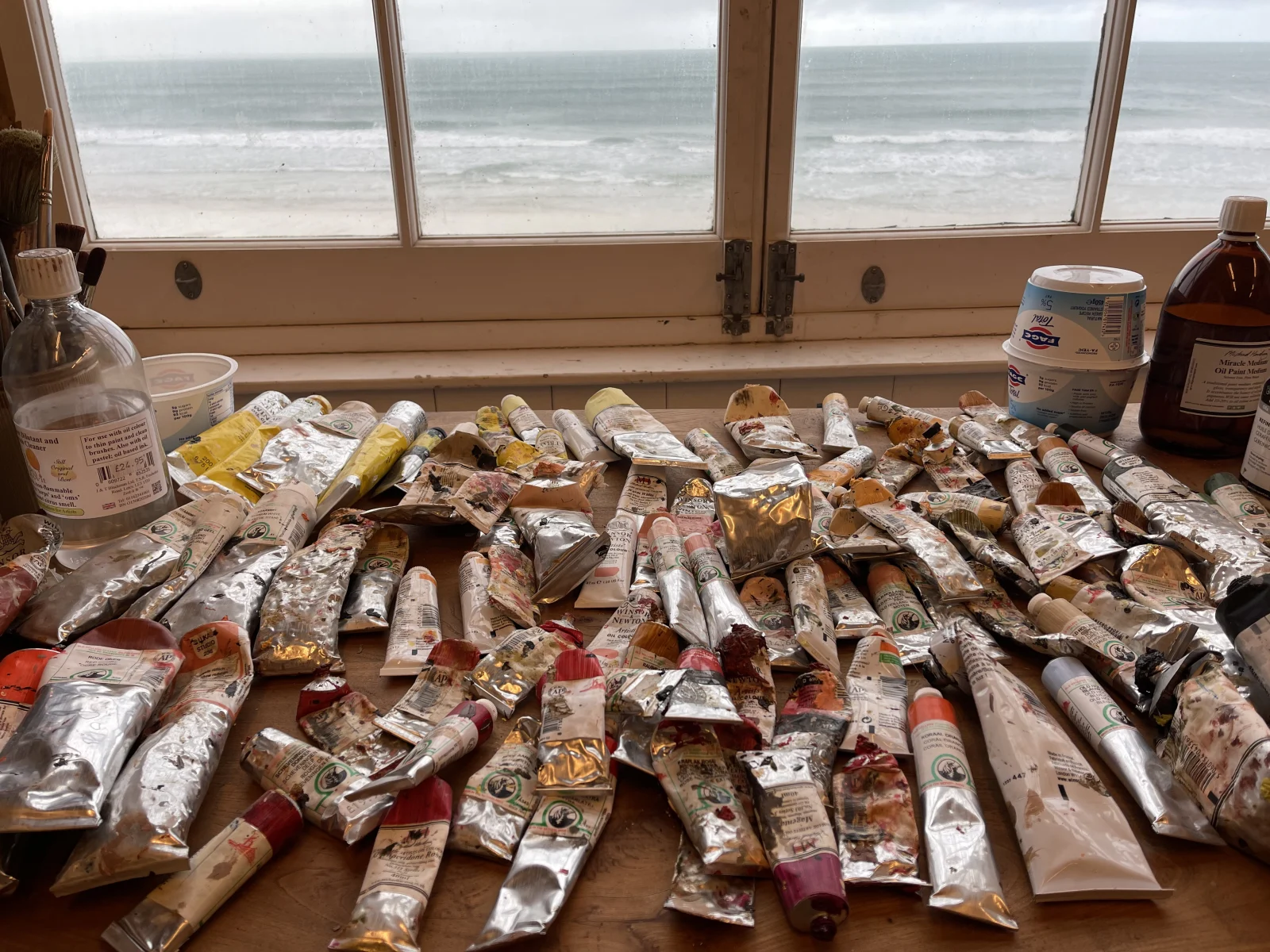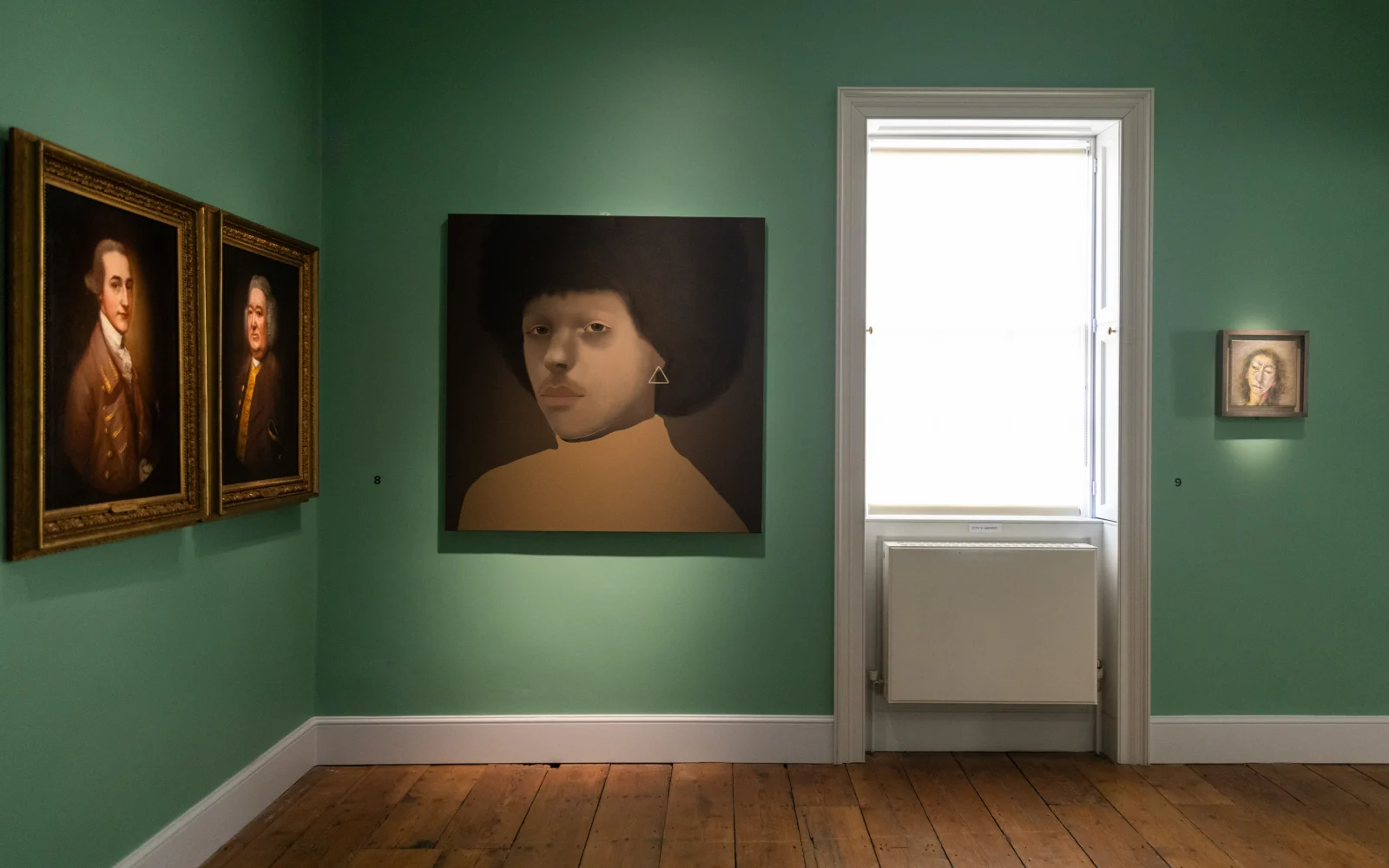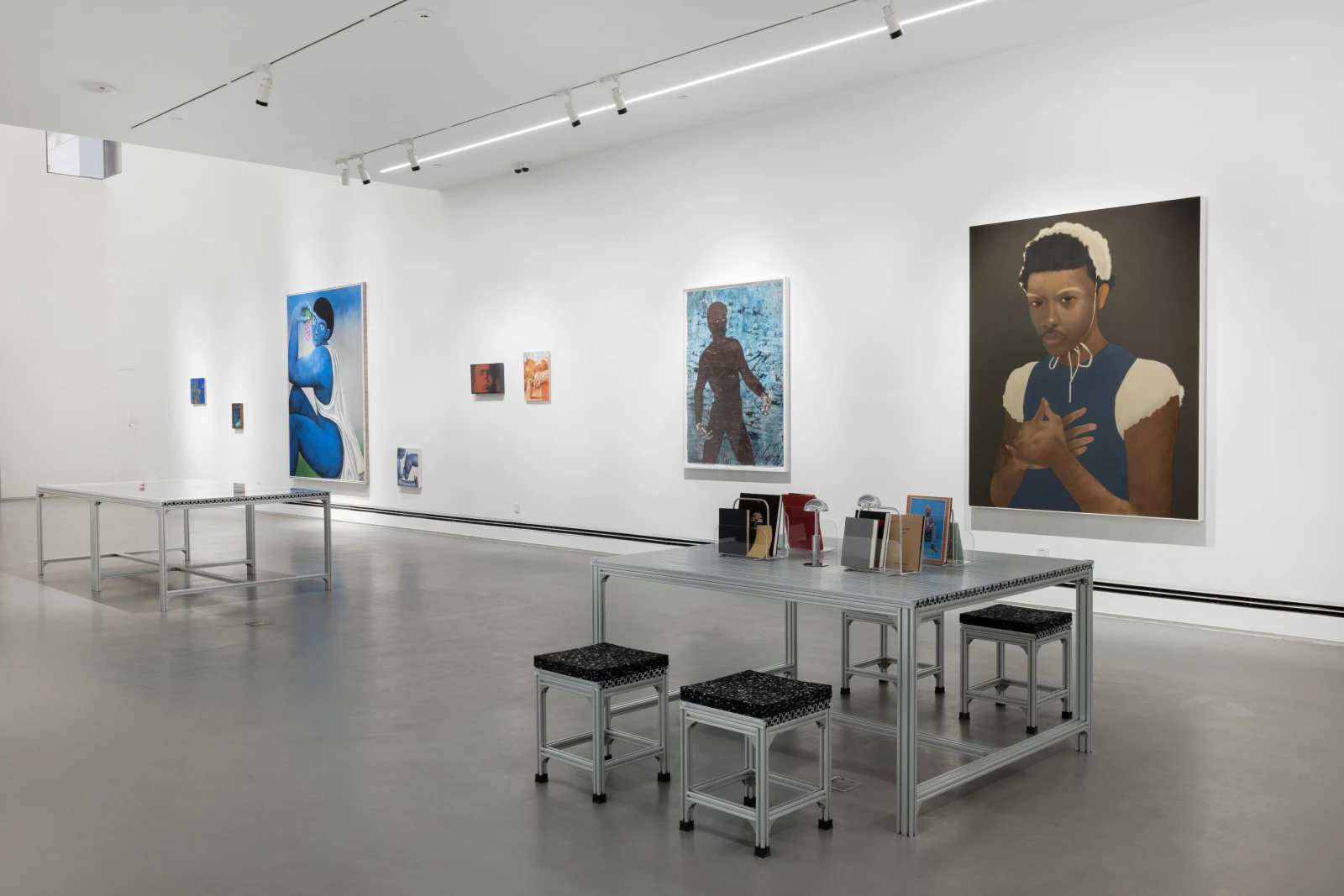Overview
For Frieze London 2025, Stephen Friedman Gallery is pleased to exhibit a solo presentation of new portraits by British artist Sarah Ball.
Bringing together large and small-scale paintings alongside a series of 20 works on paper, the presentation continues Ball’s sensitive exploration of the human condition and how it is outwardly conveyed through physiognomy, hairstyles, clothes, jewellery and make-up. This coincides with Ball’s major institutional exhibition at Longlati Foundation, Shanghai, which opened in August 2025.
Ball explores modes of self-expression through the genre of portraiture. Philomena Epps writes that Ball’s inspiration comes from the artist’s “own teenage experiences, coming of age listening to records made by musicians like Pauline Black, David Bowie, Chrissie Hynde, Siouxie Sioux and Poly Styrene – music she still plays in her studio today. These confident and innovative figures were her role models, and by extension Ball was influenced by how they experimented with their gender expression and revelled in their difference.” Today, Ball experiences this spirit of non-conformity through the lens of her queer daughter, Edie, and her friends.
For Frieze London 2025, Stephen Friedman Gallery is pleased to exhibit a solo presentation of new portraits by British artist Sarah Ball.
The faces she paints are intoxicating in their originality; they embrace self-expression. Depicted in front of monochromatic and muted backdrops, free from distraction, the portraits – fresh and luminous – are all about themselves. These people are posing, which to Ball is what makes them interesting. They aren’t passive, they know they’re being painted. They’re looking back at us as if to say, “So, what do you think?”
Chloë Ashby
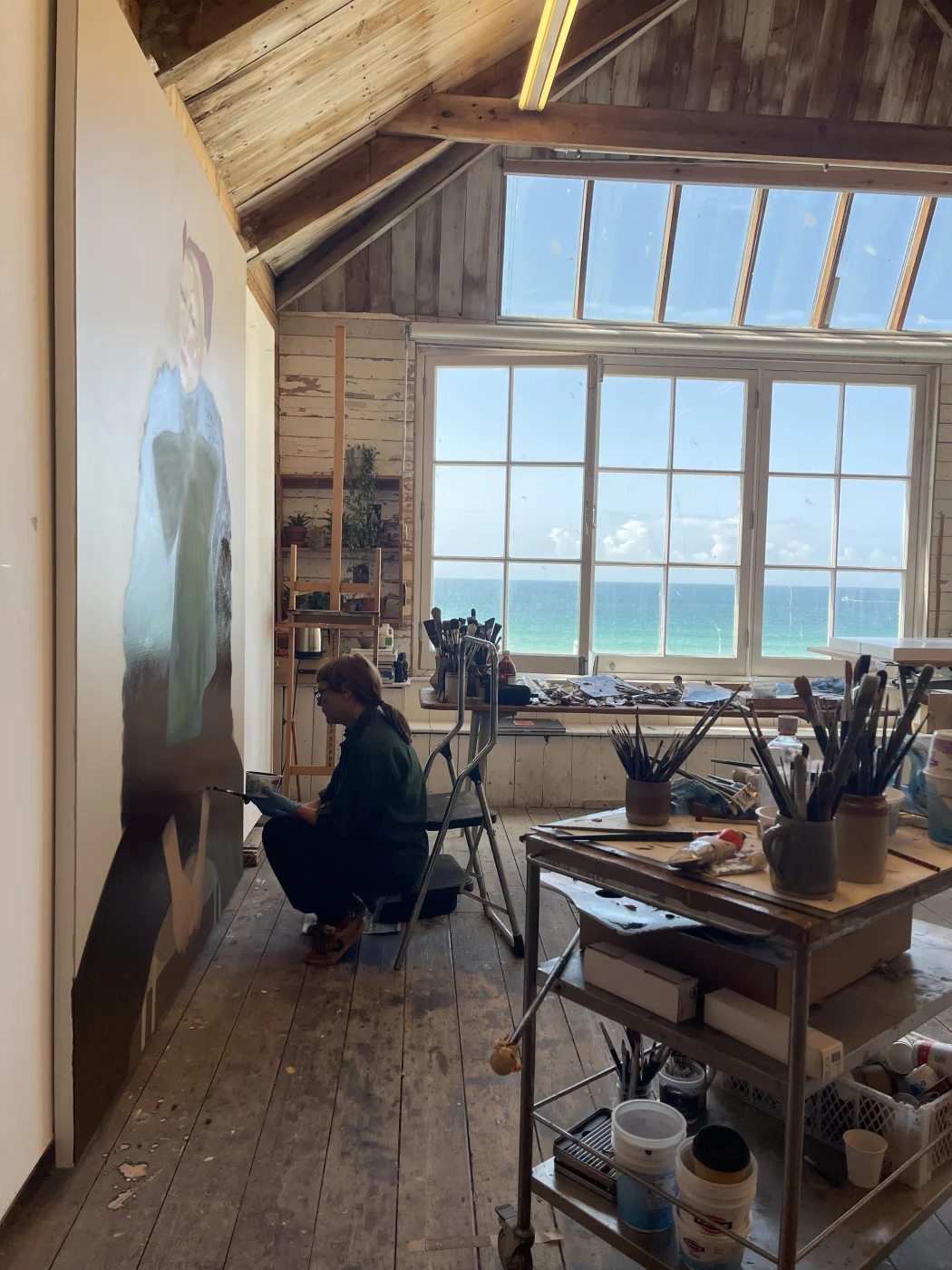

Sitting on a stool with her legs apart and her hands in between, fingers curled around the seat’s edge, Emma F looms over us, a striking presence. As she sizes us up, she tilts her head to one side, accentuating her already angular face; her long, straight nose is incredibly elegant. The rouge on her cheek picks up on her lipsticked pout. Between her lashes and brows is a smudge of creamy eyeshadow. Emerging from beneath her red hat is a sweep of platinum-blonde hair – a sweep, and a rogue curl.
Chloë Ashby
The beauty of the oversize imagery is that it enables the painting process to take over.


The presentation also sees Ball paint a double portrait for the first time, the biggest painting the artist has made to date. Anthony and Mr Young McNair (2025) immortalises a queer couple, both adorned with exuberant clothing and handmade jewellery in various shades of pink. The painting is inspired by a work titled Sir Thomas Mansel of Margam and his wife, Jane from the 17th century, which Ball frequently visited at the National Museum Cardiff when she lived in Wales. Despite the work’s formality, the artist was drawn to its unorthodox tenderness; husband and wife can be seen holding hands, which would be incredibly unusual in a portrait from this period. This subtle intimacy is reflected in Ball’s own portrait, with both men depicted in a relaxed embrace. Using a traditional genre once associated with social status, wealth and heteronormative values, Ball instead implements the historic format to celebrate queer love on an epic scale.

Anthony wears a robe with a love-heart pattern, Christopher a shirt and tie with a violet waistcoat and ruddy trousers. Both have elaborate headdresses, gauzy folds of fabric pricked with polka dots and pearls and threaded with fine ribbons. The jewellery was designed by Anthony, whose necklace turns the portrait into a triptych, with its own portrait roundel. For the most part, though, Ball has pared back the clothing to let the faces shine.
Shine or sparkle. There’s a reason my gaze goes straight to their cheeks. Anthony’s are round and rosy, while Christopher’s have a smattering of freckles that tiptoe up and over the bridge of his nose; both bear a resemblance to the headdresses with the pearls, quietly twinkling. Ball has long been interested in biometrics, the reading of physical characteristics and how they relate to identity. There’s a warmth to Anthony’s eyes, softly sloping, and contained within Christopher’s arched eyebrow is a hint of daring.
Chloë Ashby
The eyes, for me, are the counterweight to all that instant consumption. They meet our gaze, and invite us into slower, more inclusive ways of seeing. They remind us that a face is never the whole story. There is a reciprocity in the gaze that slows you down and asks: who am I assuming I see?
Sarah Ball
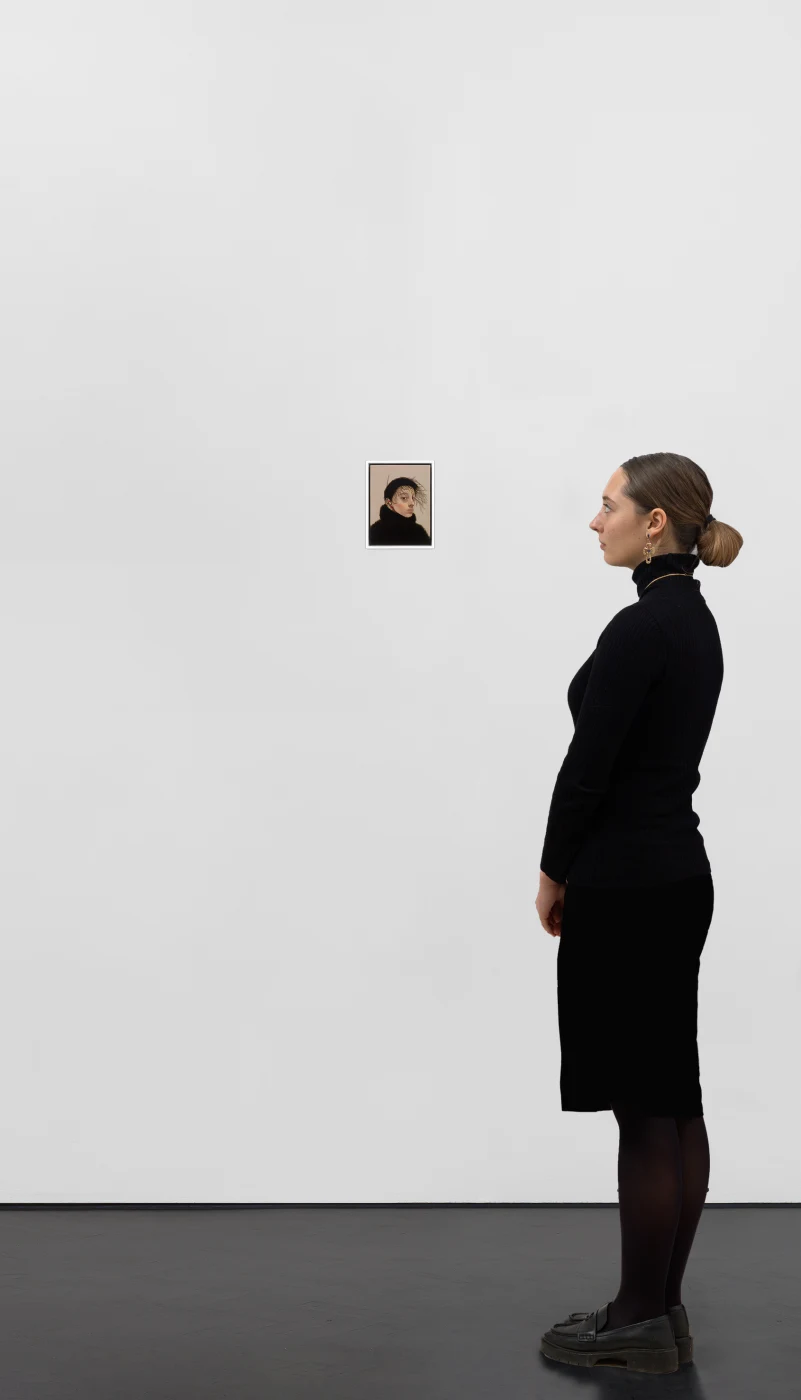
Other paintings in the presentation demonstrate Ball’s longstanding practice of using images found on Instagram, looking at the ways in which we create and curate versions of ourselves online. Miniature in scale, Petros (2025) is seen wearing a large geometric earring and a hat adorned with trimmed ostrich feathers. Here, Ball resists the quick-paced nature in which we consume images on social media by instead inviting close observation.

Petros is ready for autumn, in a fuzzy black jumper that nuzzles against his chin. He wears a bejewelled cuff in rainbow colours that covers his ear from top to lobe, and a hat made from wispy feathers that look like they’re blowing in a breeze. Most of the feathers flicker forwards, following the direction of the strands of hair on his forehead. But one stands upright, refusing to comply – you could say it’s going its own way.
Which is something Ball’s subjects have in common – a knack for defying convention.
Chloë Ashby


Depending on the scale of the work, the intensity of the formal language varies, but in all the works, the intention is to point you towards the gaze as the way to access meaning. Large or small there is always a balance that needs to be maintained within the work, so the areas that might be defined in the smaller works are left unrendered at a large scale.
Sarah Ball

A new series of small works on paper feature heavily cropped drawings of friends and fellow creators, highlighting physical attributes and material adornments that reveal their idiosyncrasies. These extreme and detailed close-ups, amplifying the works’ psychological intensity, speak to Ball’s longstanding interest in film. The British New Wave, a particular inspiration for the artist, was a cinematic movement in the UK during the late 1950s and 1960s characterised by its focus on realism and social commentary. This intimate observation of the human condition is mirrored in Ball’s own investigation of what makes us visually unique.

There’s a delicacy to the drawings, made with soft coloured pencils, that another artist might have shied away from given the bold features of the subjects. But part of the charm of Ball’s portraits is the way they hang in the balance. Just as loosely worked areas in the large paintings leave room for more intricate passages to shine, using a delicate medium to describe someone with dramatic details enables us to appreciate them slowly, to take a step back. They’re at once soft and razor sharp, intense and intimate, contained and complex.
Chloë Ashby

The result is a collection of images that blend realism with a painterly quality that’s entirely Ball’s own. A curator of characters, she’ll gather photographs of people and hold onto them until she feels that they fit within the body of work she’s making. As she says: she’s creating a gang. A gang of individuals going their own way.
Chloë Ashby










